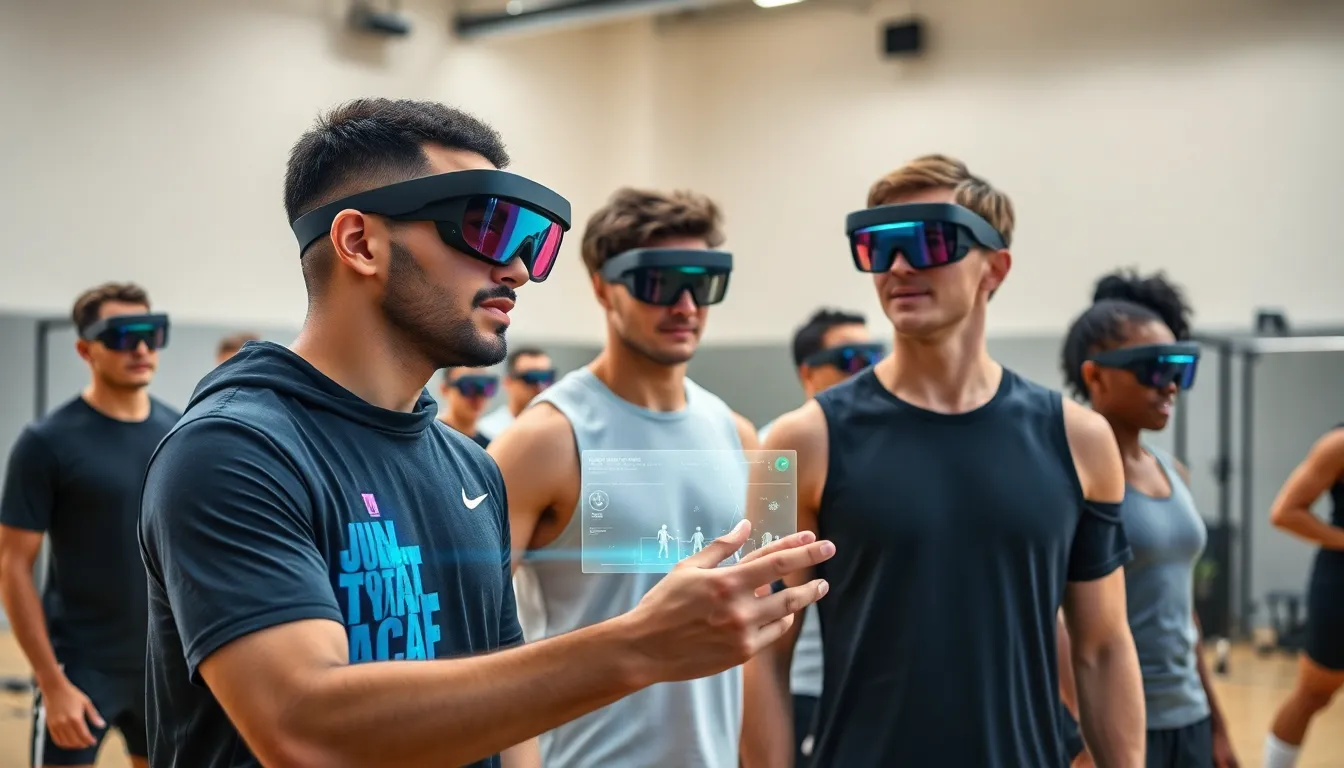Imagine sitting in your living room, pizza in hand, while your favorite team plays an away game. Now, throw augmented reality into the mix. Suddenly, the players are right there in your living room, and you can see their stats projected in mid-air. Sounds futuristic, right? Yet, augmented reality (AR) is painting a whole new landscape in the world of sports. This tech isn’t just for video games anymore: it breathes new life into how fans engage with their favorite teams and how athletes train. Buckle up as we jump into the transformative impact of AR in sports, where technology meets passion, and let’s keep the ball rolling.
Table of Contents
ToggleUnderstanding Augmented Reality

Augmented reality bridges the gap between the real world and the digital universe. It overlays digital information, like graphics and stats, onto our real-world environment. Unlike virtual reality, which requires full immersion in a computer-generated world, AR enhances what we see in our environment. Users typically interact with augmented reality through mobile devices or AR glasses. The result? A unique blend of reality enhanced with digital elements that can drastically change experiences. In sports, this interplay has the potential to redefine everything from training methods to fan engagement. Understanding AR’s fundamentals sets the stage for appreciating its expanding role across the sporting landscape.
Applications of Augmented Reality in Sports
The applications of augmented reality in sports are as varied as the sports themselves. First off, there’s the enhanced broadcast experience. Imagine watching a basketball game and a holographic player analysis pops up beside your favorite players, showcasing shooting percentages and play-by-play data in real-time.
Secondly, teams are increasingly utilizing AR for tactical training. Players can engage with virtual opponents, rehearse plays, and analyze game footage enhanced with digital overlays. This immersive training experience not only increases retention but also accelerates skill development.
Coaches can display critical feedback on a player’s performance right above them, taking real-time learning to a new heights.
Finally, AR fosters fan interactions during live events. Teams like the NBA and NFL have integrated AR features into their mobile apps, allowing fans to point their devices at the field and see player stats or instant replays, transforming the viewing experience into something interactive.
Enhancing Fan Experience Through Augmented Reality
The fan experience is undergoing a huge evolution thanks to augmented reality. Stadiums are no longer just places to watch games, they’re immersive experiences. Let’s explore a few ways AR is elevating fan interactions:
- Interactive Displays: Teams are leveraging AR to create interactive displays that fans can engage with as they enter stadiums. Imagine pointing your phone at a massive poster of a team star and watching it come to life, complete with movements and personal bests displayed.
- Live Polling and Games: During breaks in the game, teams can use AR apps to initiate live polls or mini-games that engage the audience. Who doesn’t love to vote on the next song or participate in a trivia challenge?
- Merchandise Integration: AR enhances the shopping experience for fans. Scanning specific items at the game can provide access to exclusive content like discounts or virtual meet-and-greets with players.
The result? Fans feel more connected, informed, and entertained, turning a simple game outing into a memorable event.
Augmented Reality for Training and Development
Training and development processes in sports are experiencing a transformation fueled by augmented reality technologies. Coaches and trainers are harnessing AR for various purposes:
- Skill Visualization: Athletes can visualize their movements alongside digital representations of their ideal techniques. For instance, a golfer can see their swing traced alongside an expert’s swing, allowing for instant comparison and adjustments.
- Game Scenario Simulations: AR allows teams to simulate game scenarios for strategic planning. Instead of only reviewing game footage, players can engage in virtual drills that place them in game-like situations, which enhances decision-making abilities during actual plays.
- Injury Prevention and Rehabilitation: Training with AR has shown promise in helping athletes recover from injuries by allowing them to practice movements within a controlled, risk-free environment. This practice not only aids in physical recovery but also boosts confidence.
Challenges and Limitations of Augmented Reality in Sports
Even though its vast potential, augmented reality in sports also faces challenges. First and foremost, technical limitations can hinder its effectiveness. Current AR technology is often reliant on the processing power of devices, which can lead to lag or inaccuracies in visualization.
Also, costs associated with developing AR applications can be prohibitive for smaller teams or organizations. While the bigger leagues can invest significant resources, many may find it hard to justify the investment for the potential returns of AR integration.
Finally, there’s the issue of user adaptation. Not all fans or athletes are comfortable with advanced technology. Training players on new AR tools and ensuring fans embrace these innovations requires time and effort, both of which can become stumbling blocks.
The Future of Augmented Reality in Sports
The future of augmented reality in sports looks bright and filled with potential. As technology advances, we can expect AR to become more integrated into training regimens, fan experiences, and game broadcasting.
Developments in artificial intelligence and machine learning could lead to personalized AR experiences catering to individual fans or athletes. Imagine a platform that analyzes your participation in fan polls and serves up custom content or interactive experiences that resonate with your interests.
Besides, cross-platform applications may blur the lines between in-stadium and at-home experiences, creating a seamless integration. Fans could feel they are part of the event regardless of their location, allowing for unprecedented levels of engagement.
Eventually, as awareness of augmented reality grows, its acceptance and implementation are likely to increase, driving innovation across all sports.


